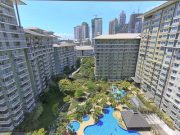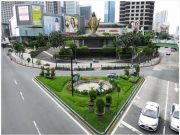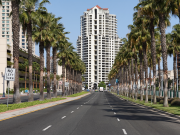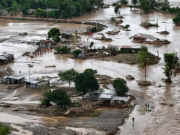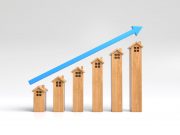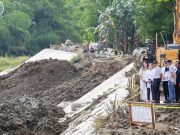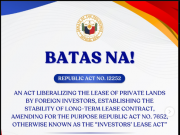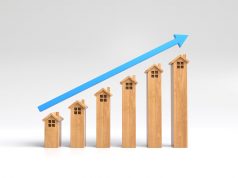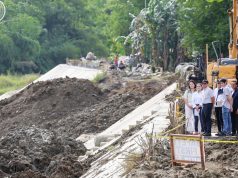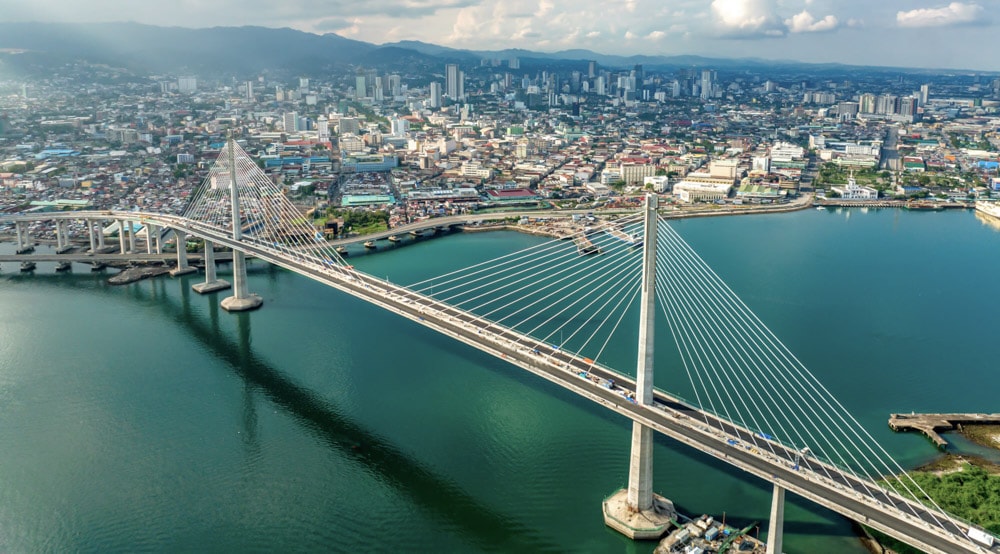
Executive Summary
By Sheila Viesca, PhD.
With insights from John Riad, CEO of HousingInteractive
The Philippine real estate sector’s growth is driven by infrastructure. The previous “Build, Build, Build” program initiated significant infrastructure projects. Building on earlier efforts, the Marcos administration’s “Build Better More” program prioritizes inclusivity, resilience, and regional equity. This means real estate growth is expanding beyond Metro Manila into other regions connected by new infrastructure. This report will examine how this national shift affects long-term housing demand and the roles of HousingInteractive and TalkShop in fostering smarter, more human-centered development.
Benefits of Mixed-Use Developments Near Infrastructure Upgrades and Expansions
Mixed-use developments, especially when strategically located near infrastructure upgrades and expansions, offer advantages that create thriving, modern communities. These integrated spaces combine residential, commercial, and recreational spaces, fostering environments where people can live, work, shop, and relax without extensive travel.
- Less Traffic, More Accessibility: One of the primary benefits is a significant reduction in traffic congestion. By having shared amenities and workplaces within walking or short commuting distances, residents rely less on private vehicles, leading to fewer cars on the road and reduced travel times. This naturally leads to increased accessibility, making daily errands and commutes more convenient and less stressful.
- Fostering a Sustainable Environment: These developments promote a more sustainable environment. Less reliance on cars translates to lower carbon emissions and a smaller environmental footprint. The efficient use of land and resources within a compact area supports green initiatives and energy conservation.
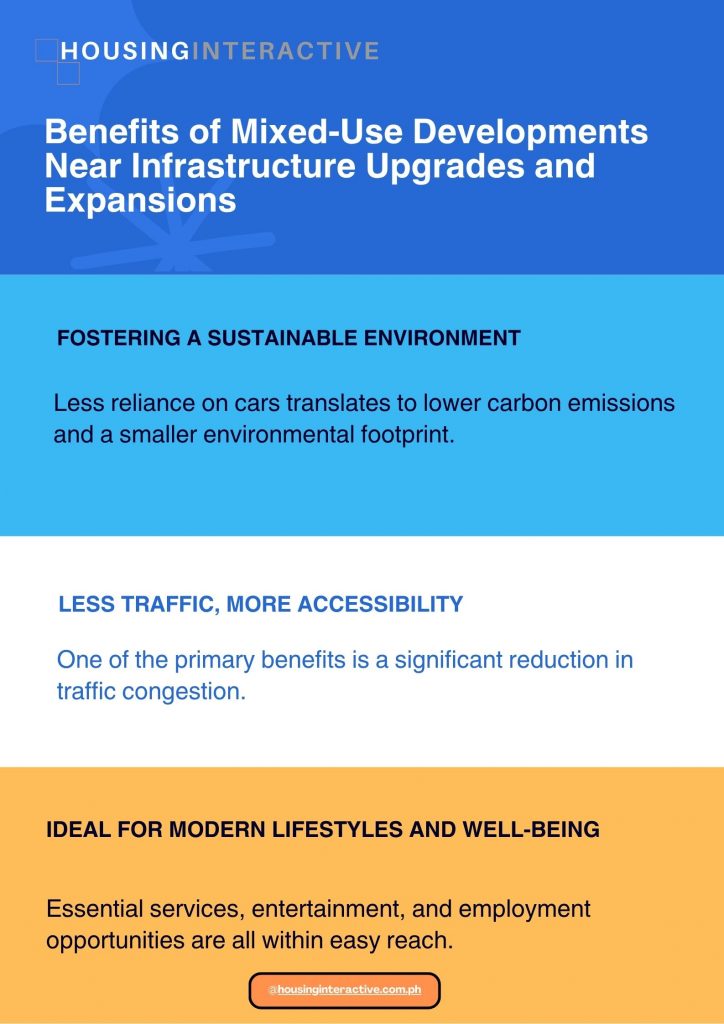
- Ideal for Modern Lifestyles and Well-being: Mixed-use communities are attractive to young professionals and families who prioritize convenience and accessibility. They offer a dynamic lifestyle where essential services, entertainment, and employment opportunities are all within easy reach. Beyond practical benefits, these developments foster social interaction and community building. Shared public spaces, local businesses, and diverse activities encourage connections among residents, which is vital for physical and mental well-being.
Successful examples can be seen in the Philippines’ top five sustainable cities: Makati City, Taguig City, Quezon City, Cebu City, and Davao. These urban centers exemplify how strategic planning and a strong commitment to sustainable development can transform urban spaces into vibrant, livable, and economically dynamic mixed-use hubs. Their proximity to robust infrastructure significantly enhances their appeal and value, benefiting residents and fostering inclusive growth.
Challenges Facing the Industry
The Philippine real estate industry faces several challenges that require careful planning and effective management to address issues such as traffic congestion and environmental degradation. Climate change and aging infrastructure pose significant threats, with rising temperatures and extreme weather impacting urban areas and real estate projects.
To stay competitive and sustainable, the industry must adapt to new trends and technologies, including the growing demand for remote work and eco-friendly, energy-efficient buildings. Working together through public-private partnerships is key to solving these challenges and building a more sustainable future. Also, investing in renewable energy and green building practices is vital to lowering the industry’s carbon emissions and protecting our environment for the long term.
Real Estate’s Future: Adapting, Partnering, and Going Green
1. From “Build, Build, Build” to “Build Better More”
The “Build, Build, Build” campaign resulted in the construction or initiation of over 40,080 kilometers of roads, 6,854 bridges, and 248 airport projects. However, critics frequently highlighted shortcomings in inclusivity and sustainability within these efforts.
The “Build Better More” program directly tackles these issues by focusing on several key areas:
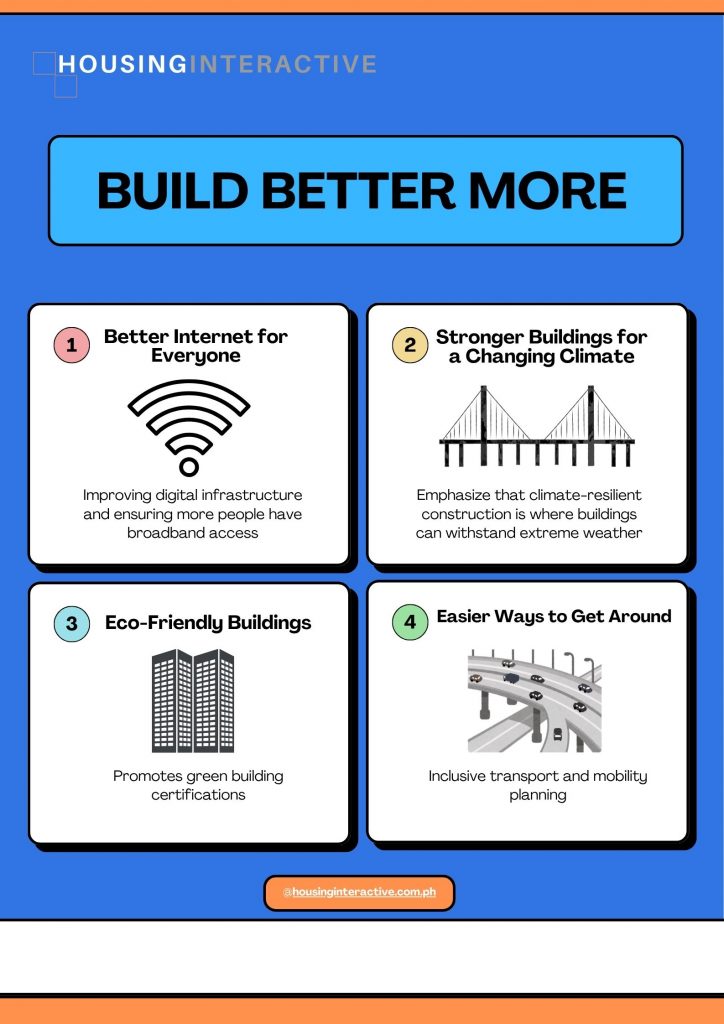
- Better Internet for Everyone: This means improving digital infrastructure and ensuring more people have broadband access.
- Stronger Buildings for a Changing Climate: The program emphasizes climate-resilient construction so our buildings can withstand extreme weather.
- Eco-Friendly Buildings: It promotes green building certifications, encouraging the construction of environmentally friendly structures.
- Easier Ways to Get Around: The program also focuses on inclusive transport and mobility planning, making traveling simpler for everyone.
As of early July 2023, the government’s economic planning agency (NEDA) announced that over 194 major infrastructure projects are underway. What’s significant is that 68% of these projects are outside Metro Manila, showing a clear effort to spread development more evenly across the country.
2. Infrastructure as a Multiplier for Real Estate Value
According to the World Bank, a 10% increase in infrastructure quality can raise property values in connected regions by 15–20%. The effect is especially pronounced in second-tier cities, where transport access is a key driver of investor confidence.
HousingInteractive data reveals that listings within 3 kilometers of a new infrastructure project (e.g., rail, expressway, seaport) appreciate 27% faster over a 24-month cycle than those in non-connected zones.
“It’s not about where people live now—it’s about where they’ll want to live next,” says John Riad, CEO of HousingInteractive. “We help clients anticipate that movement—before the rest of the market catches up.”
3. Corridors to Watch: Real Estate Hotspots Emerging
Several major corridors are evolving rapidly into high-growth investment zones, transforming traditional provincial outposts into dynamic residential and commercial centers.
| North-South Commuter Railway (NSCR): The North-South Commuter Railway (NSCR) is a significant project that links the provinces of Bulacan and Laguna directly with Metro Manila. This connectivity has already spurred a substantial surge in property interest in Malolos, Calumpit, and San Pedro. Once considered more rural, these towns are now becoming attractive residential and commercial hubs due to easier access to the capital and other key areas along the railway line, making daily commutes more feasible for many. |
| Mindanao Railway Phase 1: The Mindanao Railway Phase 1, connecting Davao, Tagum, and Digos, is set to be a game-changer for the region. This crucial infrastructure is expected to unlock thousands of hectares of land, creating immense opportunities for affordable housing projects and the development of much-needed logistics hubs. By improving the movement of goods and people, this railway will stimulate economic growth and make these areas more viable for large-scale development. |
| Panay Rail Revitalization: The anticipated project promises to revive vital connectivity across Iloilo, Capiz, and Aklan. This renewed rail access is projected to significantly boost real estate activity around Roxas City. Improved transportation links will boost local commerce, increase tourism, and make these areas more attractive for residential and commercial investments, supporting the region’s overall development. |
| Cebu–Cordova Link Expressway (CCLEX): The Cebu–Cordova Link Expressway (CCLEX) has dramatically improved accessibility to and from Mactan Island. This has naturally led to a significant boost in demand for real estate in Cebu’s outer districts and on Mactan itself. The expressway reduces travel times and fosters greater integration between these key areas, making them more appealing for new developments and residents seeking convenience and connectivity. |
These projects turn traditional provincial outposts into dynamic residential and commercial growth centers.
4. Urban-Rural Mobility: The New Dynamic
Infrastructure today isn’t just about moving people around. It is about expanding opportunities. As travel becomes faster and more reliable, more professionals are opting to live in quieter provincial areas. They can now work remotely or commute to the city just a few days a week, enjoying a better quality of life.
This significant shift has created new types of real estate buyers and residents:
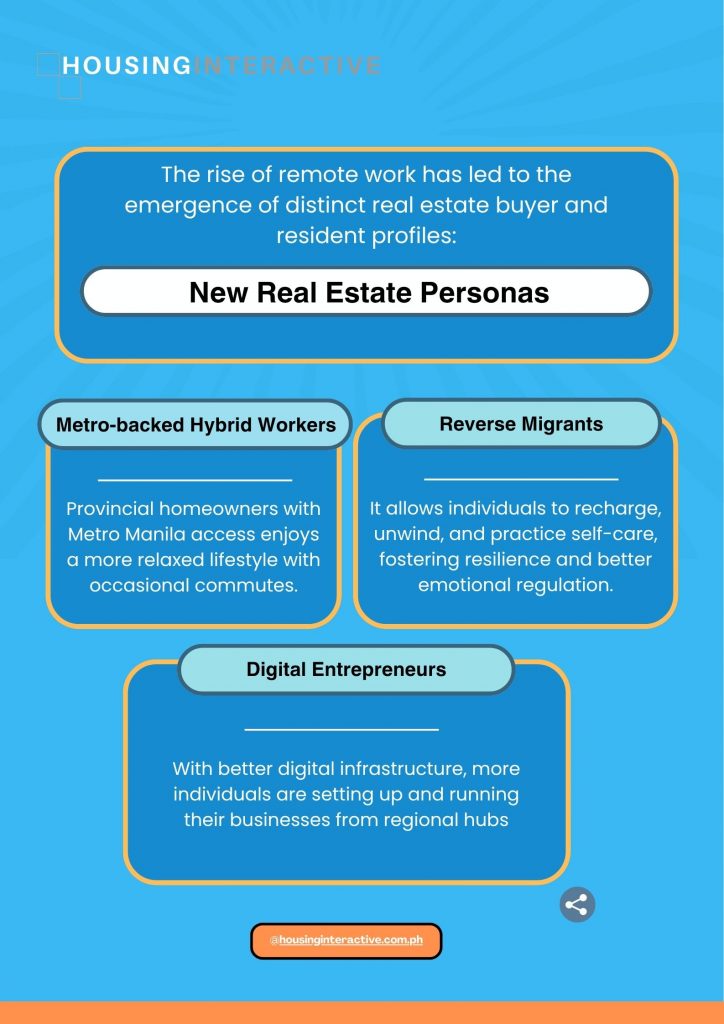
New Real Estate Personas
- Metro-backed Hybrid Workers: These are individuals who own homes in the provinces, enjoy a more relaxed lifestyle, and still maintain access to co-working spaces or offices in Metro Manila for their occasional commutes. This allows them to blend provincial living with urban career opportunities.
- Reverse Migrants: This group includes Overseas Filipino Workers (OFWs) returning home and urban professionals deciding to move back to their provincial roots. They’re drawn by the improved infrastructure, better connectivity, and enhanced quality of life in their hometowns or ancestral provinces.
- Digital Entrepreneurs: With better digital infrastructure, more individuals are setting up and running their businesses from regional hubs like Bacolod and Davao. They can leverage the lower cost of living and a growing local market without needing a physical presence in the highly congested capital.
This trend is strongly supported by government initiatives like Digital Cities 2025, which actively promotes digital readiness in the countryside. Such programs further enhance the viability and attractiveness of provincial areas for both living and doing business.
5. Affordable Housing and Government Synergy
Complementing these shifts, new infrastructure projects are paving the way for smart cities and integrated communities designed from the ground up to prioritize connectivity, sustainability, and efficient mixed-use living.
A cornerstone of the “Build Better More” agenda is inclusive housing. DHSUD’s goal of new homes by 2028 is backed by:
- The Pambansang Pabahay Para sa Pilipino Program
- Incentives for developers to construct socialized housing near transit hubs
- LGU-supported land banking for affordable projects
HousingInteractive works with developers to ensure these projects reach the right buyers, balancing social impact with market viability.
6. Integrated Living: Smart Cities and New Townships
The emerging Philippine real estate market trend includes the increasing popularity of co-living spaces and mixed-use developments among investors and residents. The growing demand for sustainable and energy-efficient buildings is fueled by heightened awareness of climate change and environmental quality. Additionally, remote work is reshaping the industry as companies adopt more flexible work arrangements, emphasizing a better work-life balance.
We need careful planning and smart management to ensure that everyone—residents, businesses, and local communities benefits from these changes.
| New Clark City: New Clark City is a prime example of forward-thinking urban development. Being designed as a truly climate-resilient urban center, New Clark City is built to withstand future challenges. This includes being prepared for potential pandemics and being resilient against natural disasters. Its design emphasizes sustainability, modern infrastructure, and strategic planning to ensure long-term livability and economic stability. |
| Bacolod Economic Highway: The development of the Bacolod Economic Highway is a major magnet for investment. This new infrastructure is attracting the establishment of large-scale commercial parks and the development of modern green townships. By improving connectivity and accessibility, the highway transforms the area around Bacolod into a thriving economic corridor, creating new opportunities for businesses and residents. |
| Tagum City: Tagum City is rapidly emerging as a significant residential-investment magnet. It’s strategically leveraging its excellent connectivity to Davao, coupled with the ongoing rail expansion in the region. This improved accessibility and integration with major urban centers make Tagum attractive for new residents seeking a more balanced lifestyle and investors looking for promising real estate opportunities. |
TalkShop supports residents in these evolving areas through leadership programs that empower new local leaders and help professionals adjust to modern work-life dynamics.
Case Studies
Bacolod’s Real Estate Rise
The real estate sector in the Philippines offers diverse investment and growth opportunities, particularly in residential, commercial, and mixed-use developments, including collective living that appeals to investors seeking sustainability and high returns. The expanding business process outsourcing (BPO) sector fuels stable demand for office spaces and commercial units, while major infrastructure projects in Bacolod, like the Silay Airport, play a crucial role in driving regional economic growth. Continued investment in transportation and urban planning supports this development, fostering inclusive and sustainable real estate growth across the country.
Bacolod City is quietly becoming one of the top provincial property hotspots due to:
- Improved Connectivity to Silay Airport: New major roads are being built that connect Bacolod City to the Silay Airport. This significantly reduces travel time, making it much easier for people to get in and out of the city, which is a huge plus for residents and businesses.
- Growing Employment in IT Parks: The city’s Business IT parks are constantly expanding, which means more and more job opportunities are becoming available. This attracts a fresh wave of professionals seeking employment, driving up demand for housing and contributing to the city’s economic growth.
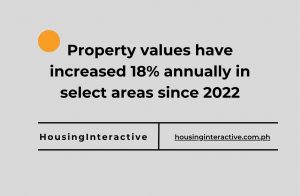
- Rise of Integrated Developments: Developers like Megaworld invest heavily in Bacolod, bringing large-scale mixed-use residential developments such as Forbes Hill. These projects combine residential areas with commercial spaces and leisure facilities, offering a convenient “live, work, play” lifestyle highly attractive to modern buyers.
- Local Government’s Green Building Push: The government of Bacolod City is actively encouraging eco-friendly construction through strong incentives. This commitment to sustainable development makes Bacolod a more attractive and responsible choice for developers and environmentally conscious residents.
Tagum City: A Model for Strategic Growth
Regional development and expansion are crucial in driving economic growth within the Philippine real estate industry. Cities such as Tagum and its surrounding provinces are experiencing notable growth, fueled by significant investments in infrastructure and strategic urban planning. The burgeoning business process outsourcing (BPO) sector contributes to increased demand for office spaces and commercial developments in these regional areas, particularly Davao. Moreover, co-living spaces and mixed-use developments are gaining popularity among young professionals and families who seek affordable, sustainable living options outside major metropolitan centers. Public-private partnerships remain essential in fostering regional development and ensuring that the benefits of growth are equitably shared among all stakeholders involved.
Located in Davao del Norte, the commercial district of Tagum City is rapidly becoming a benchmark for regional transformation. Often overshadowed by Davao City, Tagum is now attracting attention due to its proactive local governance, rising infrastructure investment, and growing private sector activity.
Several key developments are driving this transformation:
- Tagum Flyover: This is Mindanao’s longest flyover, dramatically improving traffic flow and cutting travel time to Davao City by as much as 40%. This enhanced connectivity makes commuting and transporting goods significantly more efficient.
- Tagum Overland Transport Integrated Terminal (TOTIT): This terminal has become a vital regional hub for passengers and goods. It seamlessly connects Tagum with major transportation routes across Mindanao, solidifying its role as a logistics center.
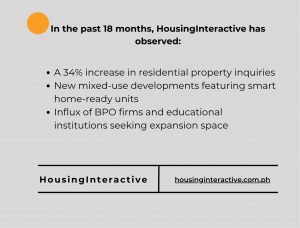
- Mindanao Railway System: Tagum is a crucial anchor point for Phase 1 of the Mindanao Railway System. This strategic position will establish the city as a primary residential and commercial hub within the important Davao–Digos corridor, further boosting its economic and population growth.
What makes Tagum unique is its deliberate growth planning. Zoning, road widening, and land banking strategies are coordinated through long-term urban development plans. TalkShop has been engaged in upskilling Tagum’s LGU leadership and local business community to prepare for this growth.
“We work with city officials, developers, and educators to ensure that progress is participative,” says Sheila Viesca. “Growth without human development is unsustainable.”
7. Risks and Regulatory Realities
While infrastructure-led real estate growth offers immense promise, risks must be carefully managed:
- Unsustainable Price Hikes: If zoning regulations are not properly enforced, property prices can escalate too quickly, making housing unaffordable.
- Environmental Damage: Badly planned construction can worsen existing problems, like increasing floods or cutting down too many trees.
- Community Displacement: People living near large projects might find housing too expensive or be forced to move without being asked.
To avoid these problems, responsible developers and brokers must follow the government’s NEDA Philippine Development Plan 2023-2028. This framework requires:
- Assessing Climate Impact: Projects must check how they will affect the environment and climate.
- Helping People Transition Livelihoods: Programs must be in place to help communities find new ways to earn a living if their current livelihoods are affected.
- Socialized Housing Requirements: A certain amount of housing must be set aside for lower-income families.
8. Looking Ahead: Infrastructure as the Backbone of Inclusion
The true success of the “Build Better More” program won’t just be about how many roads or bridges are built. What matters is how much it improves the everyday lives of Filipinos.
For the real estate sector, this translates into a clear mission:
- Homes for Everyone: We need to focus on developing property projects that are genuinely affordable and accessible to middle-income and working-class Filipinos. This ensures that the benefits of progress are shared broadly.
- Flexible Living: The future of housing means creating homes that seamlessly support modern lifestyles. This includes spaces optimized for remote work and environments encouraging lifelong learning and personal development.
- Empowering Communities: Our goal goes beyond providing shelter. We must build communities that house people and actively empower them through access to resources, opportunities, and a supportive environment.
HousingInteractive and TalkShop—fully committed to this vision—a future where homes, vibrant communities, and expanding opportunities grow together.
9. Digital Infrastructure: Real Estate’s New Cornerstone
Technology integration, including online platforms like HousingInteractive and property management software, enhances accessibility and convenience for buyers and renters, further driving up market values.
With digitalization, property value is no longer just about roads and bridges—it’s increasingly about connectivity. High-speed internet and reliable telecom access have become essential location criteria, especially for hybrid workers and tech-enabled entrepreneurs who rely on seamless digital communication and remote work capabilities.
According to the Department of Information and Communications Technology (DICT):
- Only 56% of Philippine households currently have stable internet access
- The “Broadband ng Masa” initiative aims to cover 80% of rural barangays by 2028
- Average internet speeds in pilot cities like Baguio, Iloilo City, and Tagum now exceed 50 Mbps—an inflection point for digital-first migration
HousingInteractive includes broadband readiness ratings in property listings for select areas, enabling buyers to assess the remote-work potential of homes and developments.
TalkShop also addresses this shift by offering virtual communication and leadership training designed for the digital workplace, supporting professionals moving to connected communities beyond Metro Manila.
HousingInteractive + TalkShop: Dual Engines of Humanized Growth
The infrastructure and real estate partnership is only as effective as the people behind the plans. This is where HousingInteractive and TalkShop together create a strategic advantage for clients, communities, and investors.
HousingInteractive leads the market by offering:
- Extensive Property Listings: They boast a carefully selected database of over 50,000 active property listings nationwide, providing buyers and renters plenty of options.
- Data-Driven Insights: They utilize advanced data analytics to pinpoint emerging real estate hotspots directly influenced by new infrastructure developments, helping clients make informed decisions.
- Comprehensive Brokerage Support: Their brokerage tools guide buyers through every real estate process, from initial property discovery to completing necessary documentation.
TalkShop complements these efforts with:
- Empowering Local Governments and Developers: They provide specialized capacity-building programs designed to strengthen the capabilities of local government units (LGUs) and real estate developers.
- Boosting Provincial Professionals’ Digital Skills: They offer digital readiness coaching to help professionals in provincial areas adapt to the evolving technological landscape.
- Developing Future Leaders: They conduct cultural and diplomatic soft skills training to empower emerging leaders, fostering effective communication and collaboration within communities.
Together, HousingInteractive and TalkShop are committed to supporting the development of homes and the holistic transformation of communities.
HousingInteractive’s Role in Mapping Growth
Technology integration, such as property management software and online platforms, is also revolutionizing the sector by enhancing accessibility and convenience for buyers and renters. As the Philippines’ leading online brokerage, HousingInteractive uses advanced analytics to monitor infrastructure-related growth and translate it into strategic property recommendations.
Their platform overlays infrastructure blueprints with:
- Land price movement
- Developer activity
- Transport accessibility ratings
- Internet speed availability
This helps buyers and investors make data-backed decisions, especially in emerging townships and mixed-use communities.
“Data demystifies. We give clients visibility not just on what’s available—but on what’s about to emerge,” says John Riad.
TalkShop’s Role: Human Infrastructure for Growth
While physical infrastructure lays the foundation, genuine progress depends on a skilled and empowered community. TalkShop is crucial in bridging this gap, providing unmatched support to ensure people are ready to thrive alongside new developments.
In collaboration with public and private organizations, TalkShop offers:

- Communication skills training for displaced urban workers transitioning to provincial roles
- Leadership coaching for mayors and LGU officials managing urban expansion
- Business etiquette and diplomacy programs for real estate professionals engaging across diverse regions
“We don’t just teach skills—we build confidence in new environments,” says Sheila Viesca, CEO of TalkShop. “When people feel empowered, infrastructure becomes transformation.”
Building More, Leading Better
The Philippines is experiencing a fundamental shift in how growth is envisioned, implemented, and sustained. “Build Better More” is not just about new infrastructure—it’s about new values: inclusivity, resilience, decentralization, and people-first planning.
Real estate is at the center of this transformation. But true success in this new era will only come to those who:
- Understand the long-term effects of infrastructure: It’s about seeing how roads, railways, and digital networks will shape communities for decades, not just years.
- Invest in people, not just buildings: It means focusing on training, education, and empowering communities while building physical structures.
- Prioritize meaningful development: Developers should focus on projects that serve a real purpose and benefit communities, rather than just chasing quick speculative gains.
HousingInteractive and TalkShop are showing the way forward in this new landscape. Together, they represent a different kind of growth – one that is built on deep understanding, strong leadership, and a shared goal for a Philippines where everyone can thrive.



